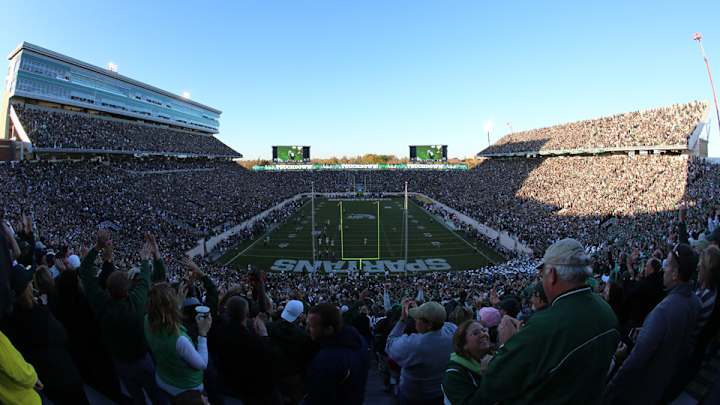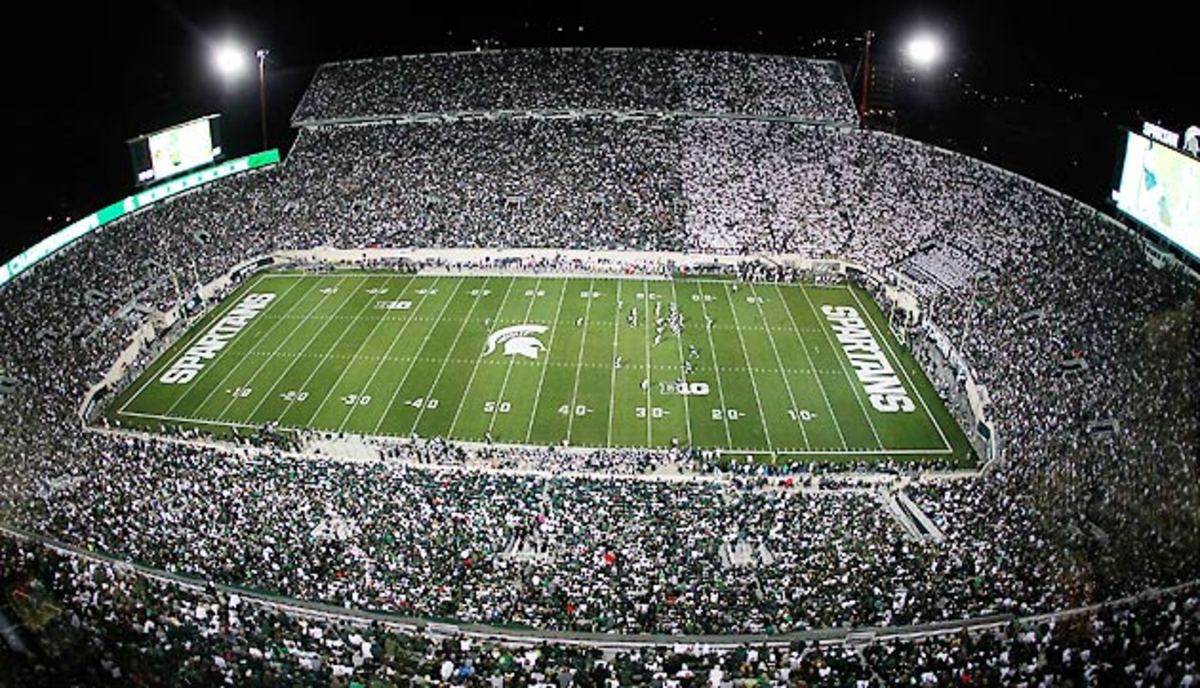Stadium Spotlight: Spartan Stadium grows from humble agricultural roots

The late 1800s witnessed the birth of a pair of fine traditions at the agriculturally minded Michigan State University: a botanical garden and football. While that garden has enjoyed a home -- the oldest continually run university garden in the nation, mind you -- since 1873, the football team didn’t get its first real stadium until 1923.
But in the spirit of agriculture, that home has only grown.
Then known as Michigan Agricultural College Stadium on Shaw Lane, the 1923 version boasted 14,000 permanent seats with stands on the east and west side. Over the many years the venue changed names and appearance -- bumping to 26,000 seats by 1935 and adding more concrete and steel to get Macklin Stadium to 51,000 seats in 1948 -- but the foundations of 1923 live on today. The biggest change, though, came in 1957, when the newly named Spartan Stadium opened with upper decks on the east and west side, a full bowl and capacity for 76,000 fans.
• HAMILTON: Ohio State QB Barrett embraces spotlight ahead of Mich. State
Without frills or a host of historical oddities to work around, modernization efforts have focused on taking “pretty much a basic stadium and making it better,” John Peterkord, HNTB associate vice president and designer of Spartan Stadium projects, tells SI.com.

The most recent addition came ahead of this season when a new north end zone expansion added a two-story entrance plaza -- with some finely polished marble -- to house the Sparty statue, a new 4,500-square-foot locker room, a training room and plenty of other interior space for the athletic department.
The 2014 renovation comes on the heels of a 2012 videoboard and ribbonboard addition that Peterkord says helped create more excitement inside the venue. In 2005, a 282,000-square-foot expansion on the west side gave Spartan Stadium new suites, upgraded concourse space and other amenities.
Peterkord says the addition of office space on the west side during the expansion gave various groups within the university prime real estate inside the centrally located stadium for use on non-gamedays.
“The opportunity to design something that will bring people onto the site gives more visibility to the facility and enhances the opportunity for revenue,” he says.
Now with capacity just over 75,000, Spartan Stadium has plenty of that visibility near the Red Cedar River in East Lansing, Mich. And with a natural-grass field comprised of four varieties of Kentucky bluegrass, Michigan State hopes for continued Spartan Stadium growth -- and an abundance of wins, as well.
Tim Newcomb covers stadiums, design and gear for Sports Illustrated. Follow him on Twitter at @tdnewcomb.
• STAFF: Week 11 picks: Can Michigan State take down Ohio State?; more
